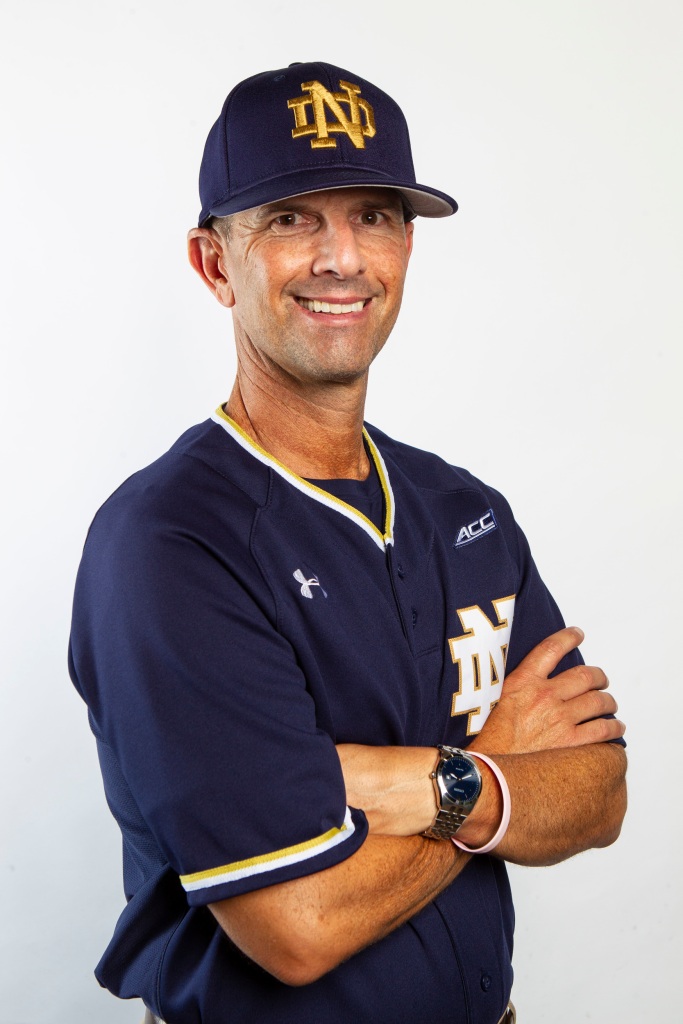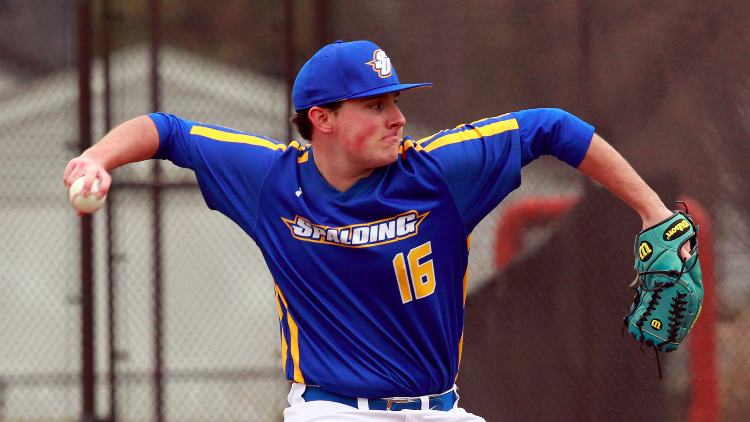
By STEVE KRAH
http://www.IndianaRBI.com
Notre Dame baseball generated plenty of base path traffic in 2021 — Rich Wallace’s second season in the third base coach’s box for the Irish.
ND led the Atlantic Coast Conference in on-base percentage (.379), runs scored per game (7.06) and runs batted in per game (6.55).
Wallace talked about coaching the bases for the South Bend Cubs Foundation Coaches Club Tuesday, Feb. 8 in the Pepsi Stadium Club at Four Winds Field.
Wallace has been coaching the bases for almost half his life. He started as a 22-year-old graduate assistant at the University of Central Florida in the first base box. At 24, he began coaching third.
Over the years, he’s learned to be ready for all situations.
“One thing that I always try to do is prepare enough that I can become invisible,” says Wallace. “I do enough work with our guys and with the scouting that nobody even notices me out there.”
Wallace looks at coaching the bases from both internal and external perspectives.
“At Notre Dame we practice base running and I practice base coaching more than any place I’ve ever been,” says Wallace, who is on a staff led by Link Jarrett. “We’ll never run the bases without both base coaches out there for our drills.
“Good base runners do not need help. The problem is they’re very hard to find and are getting harder to find.
“We’re on the bases (as coaches) all the time to get to know (the runners) — the way they run, the types of jumps, what they screw up and what they’re good at.”
Runners also get accustomed to Wallace and first base coach Brad Vanderglas.
“I have a different cadence from another third base coach they’ve had,” says Wallace. “I have different mannerisms.”
There is also creativity in the Notre Dame practice plan that allows for base running work.
“Anything that we feel is going to come up in a game or something we’ve screwed up before or might screw up we do it live,” says Wallace. “You have to have some tough skin to make it through base running because it happens so fast.
“But if you don’t put them in those situations there’s really no way they can handle it.”
Communication between coaches and players is key.
“The language needs to be the same from the head coach to the first base coach to myself so that (players) are not hearing one thing from the first base coach and it sounds like something different from me and something different from (Coach Jarrett),” says Wallace.
The Irish use a wristband system.
“We have more things in our offensive package than you could possibly imagine,” says Wallace, who notes that ND has nine different ways to bunt. “We haven’t missed a sign in three years.”
Not that the execution has always been right 100 percent of the time. But no signs have been missed.
When Wallace yells out instructions, it’s always “yes, yes, yes or no, no, no.”
“I never say ‘go’ because ‘go’ sounds like ‘no,’” says Wallace. “Make sure that you practice hand signals.”
Verbal signals are just a single word — one for advance and another to go back.
Wallace addressed spacing for base coaches. NCAA Division I rules say the coach must be touching the coaches box and the time of the pitch, but can move after that.
“Then you can be as far north (toward the outfield) and as close to the dugout as you want from that spot,” says Wallace. “Use your space. I think about what might possibly happen and I put myself in position (to make a decision where the runner will be able to see me).”
With no runners on-base, Wallace likes to get as deep as possible in anticipation of a triple.
“Everything else in the field (runners) are making their own decisions,” says Wallace. “If the ball gets in the corner then I’ll help them.
“If there’s a runner on second, I’ll be down the line as far as I can.
“I want to make sure I can see the runner and both middle infielders. Depending on where the umpire is, you adjust from there.”
Coaches also help the runner read the pitcher’s pick-off move. There’s also the back-pick attempt by the catcher.
Wallace says it blows his mind when a first base coach lets a runner get picked off with the first baseman playing behind him.
“There’s really nothing else for you to do except tell the runner what is happening behind him,” says Wallace. “So (the back-pick) should never happen.”
Wallace says its the first base coach’s job to gather information on things that will help the runner like pitcher’s grip, rhythm of delivery, catcher’s set-up and arm strength, defensive positioning and more.
The coach communicates this to the dugout without tipping anything to the opponent.
As a third base coach, Wallace is always looking for “chinks in the armor” of the opponent.
“Is there something out there I can see that’s going to allow us to exploit them and do something pretty cool that the guys enjoy themselves and score runs?,” says Wallace.
External preparation includes watching the opponent warm up to study outfielders’ arms, cut-off systems, speed of players and more.
Wallace addressed the Coaches Club in 2019 about recruiting.
Jarrett talked about what it means to be a coach in January 2022.
Notre Dame opens the 2022 season Feb. 18 against Manhattan in Deland, Fla. The first ACC game is March 11 at North Carolina State. The Irish’s first home game is slated for March 15 against Valparaiso.
Performance consultant Dr. Amber Selking will be the guest speaker at the next South Bend Cubs Foundation Coaches Club meeting at 7 p.m. Tuesday, March 29.








